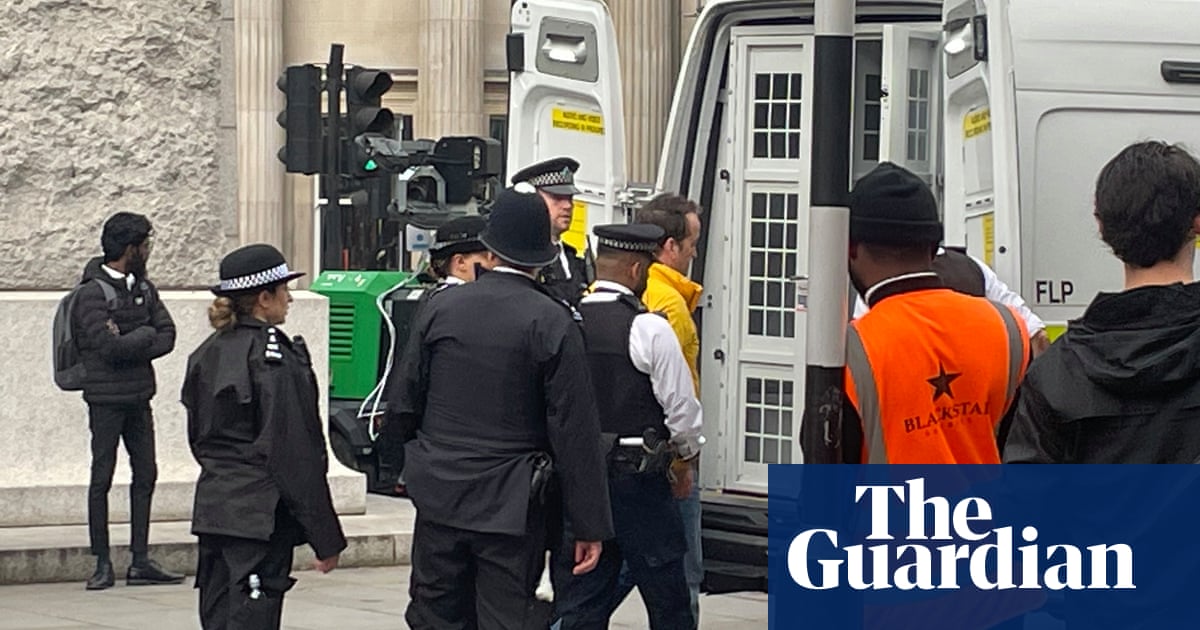Ukraine’s air defences risk running out of missiles and ammunition within weeks, an apparent leak of Pentagon documents dating from February suggests, as US defence officials raced to trace how the files became public.
One of the documents, dated 23 February and marked “Secret”, outlines in detail how Ukraine’s Soviet-era S-300 air defence systems would be depleted by 2 May at the current usage rate. It is unclear if the usage rate has since changed.
The authenticity of the Pentagon documents has not been verified. In a statement on Sunday, the Pentagon said it was reviewing the validity of the photographed documents that “appear to contain sensitive and highly classified material”.
Ukraine’s Buk air defence systems, which it relies on along with the S-300 to protest vital sites from Russian air power, could run into trouble by mid-April, the New York Times reported, and air defences protecting troops on the front line could be “completely reduced” by 23 May.
Russian fighter jets and bombers gaining more opportunity to attack Ukrainian forces could prove a major challenge for Kyiv, the Times reported, citing senior military officials.
Colonel Yuri Ihnat, a spokesman for the Ukrainian Air Force, did not comment specifically on the information contained in the documents but told the Wall Street Journal that Ukraine faced serious challenges in finding the Soviet-designed ammunition for its crucial S-300 and the Buk batteries.
“If we lose the battle for the skies, the consequences for Ukraine will be very serious,” he told the paper. “This is not the time to procrastinate,” he said, urging western allies to speed up their assistance.
The apparent leaking of the large cache of classified Pentagon documents may have been from a US source, some US officials believe.
“The focus now is on this being a US leak, as many of the documents were only in US hands,” Michael Mulroy, a former senior Pentagon official, told Reuters in an interview.
Officials say the breadth of topics addressed in the documents, which touch on the war in Ukraine, China, the Middle East and Africa, suggest they may have been leaked by an American rather than an ally.
US officials said the investigation was in its early stages and those running it had not ruled out the possibility that pro-Russian elements were behind the leak, which is seen as one of the most serious security breaches since more than 700,000 documents, videos and diplomatic cables appeared on the WikiLeaks website in 2013.
The Russian embassy in Washington and the Kremlin did not respond to requests for comment.
Following disclosure of the leak, Reuters has reviewed more than 50 documents labelled “Secret” and “Top Secret” that first appeared last month on social media websites, beginning with Discord and 4Chan. While some of the documents were posted weeks ago, their existence was first reported on Friday by the New York Times.
Reuters has not independently verified the authenticity of the documents. Some giving battlefield casualty estimates from Ukraine appeared to have been altered to minimise Russian losses. It is not clear why at least one is marked unclassified but includes top secret information. Some documents are marked “NOFORN”, meaning they cannot be released to foreign nationals.
Two US officials told Reuters on Sunday that they had not ruled out that the documents may have been doctored to mislead investigators as to their origin or to disseminate false information that may harm US security interests.
The White House referred questions to the Pentagon.
The Pentagon has referred the issue to the Department of Justice, which has opened a criminal investigation.
Such closely-guarded information could be of great use to Russian forces, and Ukraine said its president and top security officials met on Friday to discuss ways to prevent leaks.
The apparent leak has had ramifications beyond Russia’s war on Ukraine.
Another document, marked “Top Secret” and from a CIA Intel update from 1 March, says the Mossad intelligence agency was encouraging protests against Israeli prime minister Benjamin Netanyahu’s plans to tighten controls on the supreme court.
On Sunday, Netanyahu’s office issued a statement in which it firmly rejected the claim. “The Mossad and its serving senior personnel have not engaged in the issue of the demonstrations at all and are dedicated to the value of service to the state that has guided the Mossad since its founding,” the statement read.
The leaked document, labelled top secret, said that in February, senior Mossad officials “advocated for Mossad officials and Israeli citizens to protest the new Israeli government’s proposed judicial reforms, including several explicit calls to action that decried the Israeli government, according to signals intelligence”.
While the Mossad’s purpose is not defined by law, the spy agency is not meant to wade into domestic political matters.
Another document gave details of internal discussions among senior South Korean officials about US pressure on Seoul to help supply weapons to Ukraine, and its policy of not doing so.
A South Korean presidential official said on Sunday the country was aware of news reports about the leaked documents and it plans to discuss “issues raised” with Washington.
The Pentagon has not addressed the contents of any specific documents, including the apparent surveillance of allies.
Two US officials, speaking on condition of anonymity, said that while there was concern about the leak at the Pentagon and intelligence agencies, the documents showed a snapshot in time from more than a month ago, rather than more recent assessments.
The two officials said the military and intelligence agencies were looking at their processes for how widely some of the intelligence is shared internally.
Officials are looking at what motivations a US official or a group of officials would have in leaking such sensitive information, said one of the officials who spoke to Reuters.
The official said investigators were looking at four or five theories, from a disgruntled employee to an insider threat who actively wanted to undermine US national security interests.
With Reuters

 1 year ago
60
1 year ago
60










 English (US)
English (US)